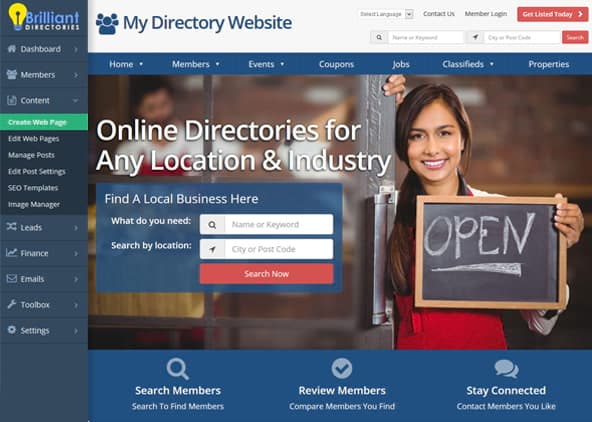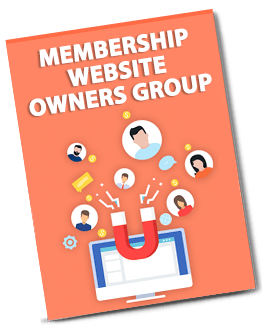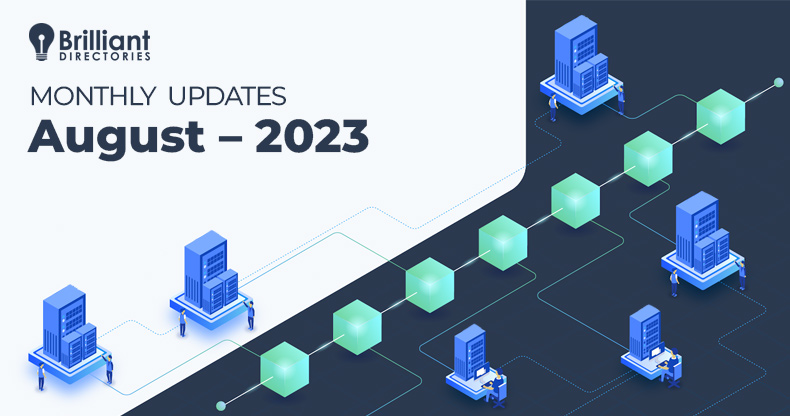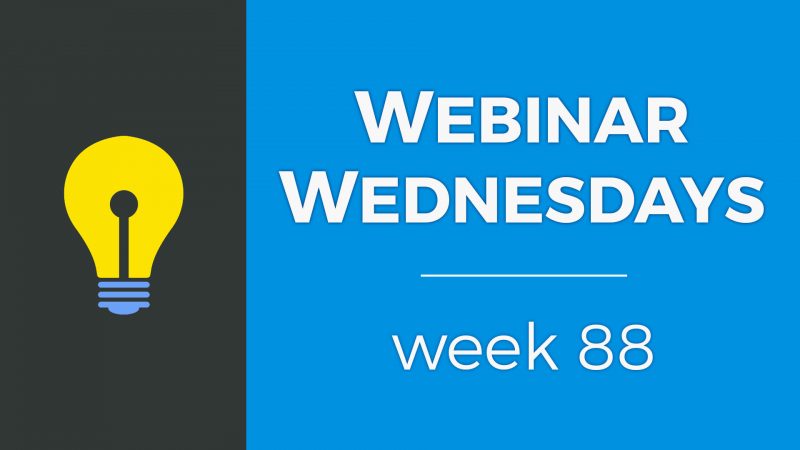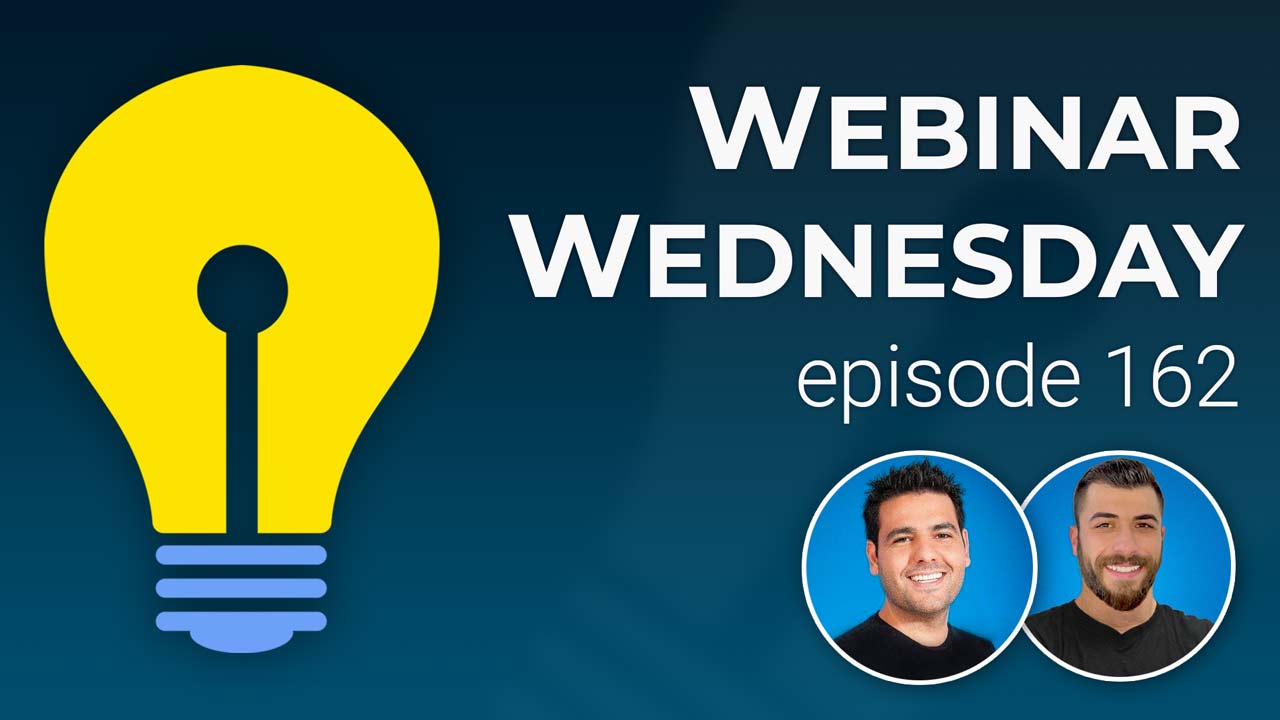
Key Topics:
- 4:11 – HOME: Faster Loading Option for Homepage Background Slider
- 6:22 – DATA: Export and Smart List for Transactions History Page
- 8:24 – ZAPIER: Easier to Understand Fields & Help Text in Zapier
- 9:07 – SPEED: Several Optimizations for Admin Speed & Stability
- 9:33 – SUMMARY: Over 80 enhancements and updates in July (more in August)
- 9:51 – SEO: Ability to Optimize Filenames and Alt Tags of Post Images & Album Images
- 10:40 – LANGUAGE: Ability to translate URL slugs in the member’s dashboard like /account/blog/edit
- 11:29 – SECURITY: Set timeout limit to automatically log members out from sessions
- 12:00 – BILLING: Better Credit Card Workflows When Members Purchase Additional Products, Leads etc.
- 12:15 – TONS MORE: Speed, security, quality-of-life features and exciting new releases on the way!
- 12:45 – Where to learn everything needed to setup a BD website?
- 14:25 – Including an FAQ on Your Membership Website’s Pricing Page
- 15:33 – Drawbacks of Not having an FAQ Section
- 20:18 – Benefits of Having an FAQ Section
- 24:35 – 8 Important FAQs to Include
- 31:46 – BONUS: Elements Your Pricing Page Needs
- 34:48 – 5 Pricing Page Tips for More Sales
- 35:05 – Sample FAQ Section
- 41:38 – Copy & Paste Common FAQs: Click HERE for Google Doc
- 42:59 – Single sign on for a third-party integration with BD?
- 44:02 – Hide hover content of featured posts on homepage?
- 46:30 – Remove post thumbnail image on search results page?
- 49:03 – Suggestion for alternate footer menu when member is logged in
- 50:51 – Suggestion for content inputs above & below signup page body content
- 52:26 – How to add an FAQ section to a webpage?
New Features
Coming Soon
Tip of the Week
Questions & Answers

 AI-Generated Transcript – Please excuse any inaccuracies
AI-Generated Transcript – Please excuse any inaccuracies
HOME: Faster Loading Option for Homepage Background Slider (00:04:11)
- The background slider, also known as the image slider, is an option for the homepage that allows users to add multiple background images that slide over the hero section, and a new setting has been introduced to address two problems: faster loading and adaptive behavior issues on certain devices (00:04:11).
- The new setting can be found in the admin area, under settings and design settings, in the home homepage tab, and it provides two options for the loading method of the slideshow: the default JavaScript version and a new pure CSS option (00:04:34).
- The JavaScript version is slightly slower, relies on additional JavaScript files, and had issues with adaptive behavior on some devices, whereas the pure CSS option is lighter, faster loading, and solves the adaptive behavior issue, but it loses the slider arrows and transition effects (00:05:07).
- The pure CSS option is recommended for slightly faster loading on the homepage and to solve the adaptive behavior issue with images, and it is available for users who have the homepage background image slider add-on (00:06:13).
- The differences between the JavaScript and pure CSS options include the loss of slider arrows and transition effects, such as swirl left and swirl right, in the pure CSS version, but all other features remain available (00:06:02).
DATA: Export and Smart List for Transactions History Page (00:06:22)
- The transactions history page now has the ability to export data and create smart lists, which can be found in the finance and transaction history section (00:06:22).
- In the transactions history page, each tab, such as payments received, upcoming payments, and past due, has two options: export the current results as a CSV file with relevant data or create a smart list (00:06:50).
- The export option allows users to download a CSV file with pertinent data, while the create smart list option enables users to search for specific criteria, such as monthly billing cycles or coupon code usage, and then create a targeted list (00:07:06).
- Smart lists can be used to send targeted newsletters or web hooks to alternate platforms, and users can further filter and create more granular lists of data (00:07:30).
- The ability to export and create smart lists is also available in other tabs, such as the refunded tab, where users can create a smart list of all refunded users (00:08:02).
- The update allows for more flexibility and control over data, enabling users to create customized lists and target specific groups of individuals (00:08:19).
ZAPIER: Easier to Understand Fields & Help Text in Zapier (00:08:24)
- Zapier integration has actions for creating new users, creating leads, and creating posts, with efforts made to make the fields and help text easier to understand (00:08:26).
- The integration actions in Zapier include creating leads, and the lead action allows setting lead status and auto-matching, with helpful text provided for each field (00:08:29).
- The help text in Zapier is designed to guide users in creating actions, making it easier to navigate and set up the integration, as seen in the lead action where each field has corresponding help text (00:08:32).
- The fields and help text in Zapier have been modified to be more user-friendly, allowing for a smoother experience when creating actions, such as setting lead status and auto-matching (00:08:37).
- The Zapier integration is also integrated with PAB, and the modifications to the fields and help text aim to provide a better experience for users when creating actions (00:08:39).
- The lead action in Zapier has features such as setting lead status and auto-matching, with clear help text provided to assist users in setting up the integration (00:08:44).
SPEED: Several Optimizations for Admin Speed & Stability (00:09:07)
- The admin area has been optimized to improve speed and stability, allowing for more efficient work on the site (00:09:08).
- Pages in the admin area now load more quickly, which can help increase efficiency when working on the site (00:09:13).
- Some of the updates made to the admin area may not be immediately noticeable, but they result in slicker page loading and less wait time (00:09:20).
- The optimizations have led to faster page loads in the admin area, reducing wait times and improving overall performance (00:09:25).
- The improvements to the admin area are intended to enhance the user experience, making it easier to work on the site by reducing loading times (00:09:30).
SUMMARY: Over 80 enhancements and updates in July (more in August) (00:09:33)
- Over 80 updates and enhancements were made in July, with the pace of updates in August expected to surpass that number (00:09:35).
- The total number of enhancements and updates for August is estimated to be around 90 or more (00:09:43).
- The updates and enhancements are ongoing, with more expected to be pushed out, including those related to Search engine optimization, which is coming soon (00:09:47).
- The high volume of updates in July and August follows a couple of weeks of inactivity, with the pace of updates now back on track (00:09:33).
SEO: Ability to Optimize Filenames and Alt Tags of Post Images & Album Images (00:09:51)
- The ability to optimize filenames and Alt attribute of post images and album images is a useful feature, allowing for improved SEO (00:09:51).
- When creating a blog post and setting a feature image, the file name of the image is not initially updated for SEO, but it can be further edited to give it a more updated file name (00:09:58).
- In the admin area, under manage posts, it is possible to update the image data, including setting the file name and alt tag, which can help improve Search engine optimization on articles (00:10:17).
- The current file name is automatically created and encrypted, but with this feature, it can be changed to a more descriptive and SEO-friendly file name, and the alt tag can also be set (00:10:26).
- By optimizing the file name and alt tag, users can improve the SEO of their articles and increase their chances of ranking for specific keywords (00:10:34).
LANGUAGE: Ability to translate URL slugs in the member’s dashboard like /account/blog/edit (00:10:40)
- The ability to translate a site with one click into various languages, including Spanish language, German language, and French language, has been created over the last year (00:10:40).
- The translation capability has been extended to areas that were previously not translatable, with updates being pushed to the final areas of the platform’s front end for translations (00:10:55).
- The member dashboard URL slugs, such as “account” and “edit”, will soon be translatable to the desired language, allowing for a more comprehensive translation of the site (00:11:13).
- This enhancement aims to help achieve a 99.99999% translation of the site, providing a more seamless experience for members (00:11:24).
- Additional significant updates are being implemented to further improve the translation capabilities of the site (00:11:27).
SECURITY: Set timeout limit to automatically log members out from sessions (00:11:29)
- Security features allow setting a timeout limit to automatically log members out of their sessions after a specified period of inactivity, which can be adjusted according to the site’s sensitivity (00:11:29).
- Currently, members are logged in automatically for 30 days, but this can be changed to a shorter duration, such as 24 hours or one hour, to enhance security (00:11:34).
- The timeout limit can be set to end a member’s session after a certain period of inactivity, such as one hour, during which no actions are taken by the member (00:11:46).
- Once the session is ended due to inactivity, the member will be automatically logged out, adding an extra layer of security to the site (00:11:51).
BILLING: Better Credit Card Workflows When Members Purchase Additional Products, Leads etc. (00:12:00)
- Better credit card workflows can help streamline payments on a site for members who are making additional purchases (00:12:01).
- The improved credit card workflows are intended to facilitate smoother transactions for various types of purchases, including leads, digital downloads, and payer posts (00:12:05).
- Implementing better credit card workflows can enhance the overall payment experience for members, making it more efficient and convenient for them to buy additional products and services (00:12:08).
TONS MORE: Speed, security, quality-of-life features and exciting new releases on the way! (00:12:15)
- The community is thanked for their continuous feature suggestions, which include speed, security, quality of life features, and other recommendations to improve the platform for everyone (00:12:16).
- The community’s input is appreciated, and their suggestions on how to make the platform better are valued, with a call to action for community members to comment or ask questions about the updates (00:12:23).
- Community members are invited to raise their hand, comment, or ask questions about the specific updates currently on the screen, with an example of a community member, Dave, already asking a question (00:12:29).
- The opportunity for community members to provide feedback and ask questions is encouraged, allowing for an open discussion about the updates and potential improvements to the platform (00:12:37).
Where to learn everything needed to setup a BD website? (00:12:45)
- To learn everything needed to set up a Business Directory (BD) website, the platform itself is a robust resource that provides various tools and information, including a blog, videos, and a knowledge base (00:12:45).
- The BD blog is a recommended resource for learning how to market a directory, and it features a membership website checklist that covers essentials such as getting started, pricing, and motivating members to complete their profiles (00:13:00).
- The blog category specifically has membership website tutorials that provide strategy videos, tips, and webinars, which can be accessed through the blog category or through a shared link (00:13:24).
- The resources and support section of the platform offers quick start videos, a knowledge base, and support that is just a click away, making it easy to find help when needed (00:13:36).
- The quick start videos are approximately five minutes long and cover technical configuration and setup, allowing users to get a minimum viable product up and running quickly, with around nine or 10 videos available (00:13:48).
- The platform’s resources are designed to help users get started and make progress with their website, with the understanding that a website is an evolving entity that requires ongoing work and improvement (00:14:02).
Including an FAQ on Your Membership Website’s Pricing Page (00:14:25)
- Including an FAQ section on a membership site’s pricing and plans page is a simple yet often overlooked topic that has significant importance, as it can help increase conversions and get prospective members to sign up (00:14:25).
- Many membership and directory sites tend to be missing an FAQ section on their pricing pages or elsewhere on the website, which can be a missed opportunity to provide valuable information to potential members (00:14:49).
- An FAQ section has numerous benefits, including helping to increase conversions and getting prospective members across the finish line, and can be relatively simple to implement on a website (00:14:59).
- Adding an FAQ section or improving an existing one can be a straightforward process, and implementing changes to a pricing page can be done easily after understanding the benefits and best practices of FAQ sections (00:15:23).
- The goal is to provide action items that can be taken immediately to improve a website’s pricing page by adding or enhancing an FAQ section, which can lead to improvements in conversions and member engagement (00:15:11).
Drawbacks of Not having an FAQ Section (00:15:33)
- The lack of transparency is a drawback of not having an FAQ section, as prospective members may view the lack of additional information as a lack of transparency, leading to raised questions or concerns, and this issue is particularly relevant when the pricing page is slim and condensed (00:15:34).
- Confusion and misinterpretation of pricing or features can occur if every single feature and benefit of each membership plan is listed on the pricing page, especially if there are several different membership plans available, and this can lead to misunderstandings (00:16:29).
- The increased support burden is another drawback, as limiting the information shared on the pricing page can result in similar questions constantly being asked by prospective members, and addressing these questions directly on the pricing page can save time for both the business and the prospective members (00:17:00).
- Users abandoning the sign-up process due to unanswered questions is a significant drawback, as prospective members may have common questions or concerns that need to be addressed, especially when it comes to paid membership plans and billing-related questions (00:17:37).
- Missed upselling opportunities can occur if the pricing page is too streamlined or cluttered, making it difficult for prospective members to understand the value of premium membership plans, and having an FAQ section can provide an additional area to expand on these details and limit questions (00:18:16).
- The FAQ section can help build confidence in prospective members by addressing their needs and doubts, and providing answers to common questions, which can ultimately lead to increased sales and a better user experience (00:19:57).
Benefits of Having an FAQ Section (00:20:18)
- Having an FAQ section on the pricing page can provide sales support, making it easier for customers to understand what is being offered, reducing ambiguity, and increasing member signups, all while saving time for both the business and prospective members (00:20:19).
- An FAQ section can help expand on primary benefits and features of each membership plan, providing additional details in an understandable way, which can increase efficiency and reduce the need for potential members to reach out with questions (00:20:42).
- Addressing concerns and questions in the FAQ section can provide clarity and give prospective members the answers they need immediately, helping to boost conversions and reduce uncertainty (00:21:07).
- Building trust with prospective members is crucial, and being transparent on the pricing page, especially when it comes to billing concerns, can help establish trust and give members confidence in signing up (00:22:11).
- An FAQ section can be used for competitor differentiation, highlighting the unique aspects of a business’s offerings and addressing questions about what sets it apart from similar websites (00:22:46).
- FAQ sections can also be used to define a brand’s voice and tone, allowing businesses to illustrate their personality and persona in a friendly and approachable way, further eliminating doubts and fears (00:23:51).
- Overall, including an FAQ section on the pricing page can help eliminate doubts, fears, and uncertainties, set the tone for how a brand interacts with customers, and provide an opportunity to showcase a business’s unique aspects and personality (00:24:16).
8 Important FAQs to Include (00:24:35)
- When creating a pricing page, it is essential to include an FAQ section that addresses common questions and concerns, such as the difference between free and paid plans, and this can be achieved by including starter FAQs that explain the benefits and features of each plan (00:24:43).
- A good FAQ to include is one that explains the distinction between different plans, such as the starter and premium paid plans, and how they differ in terms of features, access to content, and visibility (00:25:00).
- Another important FAQ is one that addresses the ability to change plans at any time, which can help alleviate concerns for users who may want to start with a free plan and upgrade later (00:25:36).
- The FAQ section should also include information on what happens after a user signs up, such as the immediate steps they will take, including receiving a welcome email with instructions on how to complete their profile (00:26:35).
- Additionally, FAQs that address the ability to list multiple businesses under one account, and how to edit a business listing, can help provide clarity and reassurance for users (00:26:09).
- It is also a good idea to include FAQs that address any upsell services or products, such as featured listings, and to provide information on how to access these services (00:28:00).
- Providing a clear and comprehensive FAQ section can help eliminate concerns and ambiguity for users, and can help them understand what to expect from the start (00:27:00).
- Using screen recordings to walk through the setup process of setting up a new member’s profile can also be a helpful way to provide additional support and guidance (00:27:37).
- The FAQ section on a pricing page is a great place to highlight additional advertising opportunities and revenue streams that a business has, and it should be front and center to avoid detracting attention from the plans themselves (00:28:26).
- It is essential to specify the location of a niche directory or one focused on a specific location throughout the website, including the homepage and the FAQ section, to ensure that people understand the website is targeted for a specific location (00:28:43).
- The FAQ section should include information on what types of businesses are suitable for the directory, especially if it is a niche directory, to help people understand if their membership listing might be denied if they are outside of that location or industry (00:28:35).
- The FAQ section should also include information on what kind of support is available to members, which is a critical aspect, especially if the business has paid plans, to reassure members that there is someone available to help them if a problem occurs (00:29:20).
- The support available to members does not have to be phone support, but it can be email or live chat, and it is essential to reinforce that there are people managing the website and taking care of everything (00:29:50).
- The FAQ section can also include information on featured listings and how they can provide higher visibility to members, whether it’s on the website or through additional online services (00:30:15).
- It is also a good idea to include a question on who benefits most from joining the website, which can help to attract the right members by describing the persona of the customers the business is trying to attract (00:31:03).
BONUS: Elements Your Pricing Page Needs (00:31:46)
- To increase conversions, a pricing page should be easily accessible and have simple membership plan options, with the most basic option being one free sign up option and internal upgrade options, (00:31:47)
- The benefits of joining should be outlined, focusing on broader points such as increased online visibility, rather than itemizing features, to help visitors absorb the information and make a decision quicker, (00:32:27)
- Including a testimonial or two, along with social proof such as a picture of someone smiling or logos of companies using the service, can help build credibility and trust, (00:32:58)
- A way for visitors to contact the company with questions should be provided, such as a link to the contact us page, a form, or a Google Voice number, to reduce abandonment rates, (00:33:17)
- A showcase of an optimized sample listing can help demonstrate the features and benefits of the service, and can be created by decorating a listing on the site or taking a screenshot and turning it into a PDF, (00:33:57)
- The pricing page should be simple, clear, motivating, and credible, with key elements such as easy accessibility, simple membership plan options, and a way to contact the company, to reduce confusion and fatigue, (00:34:31)
5 Pricing Page Tips for More Sales (00:34:48)
- A previous webinar discussed tips on how to increase conversions on pricing pages, with a link to the previous tip of the week available, and a sample FAQ on a pricing page is also being considered (00:34:48)
- The previous webinar is relevant to the current discussion, and its last slide is being referenced, with additional information on increasing conversions available in another video (00:34:50)
- There is a video that provides more tips on how to increase conversions on pricing pages, and a link to this video will be shared, with the goal of helping viewers improve their pricing pages (00:34:52)
- The discussion involves examining a sample FAQ on a pricing page, with the aim of providing guidance on how to create an effective FAQ section (00:35:01)
- The sample FAQ on a pricing page is being reviewed, and its content is being considered as an example of how to create a useful FAQ section for increasing conversions (00:35:03)
Sample FAQ Section (00:35:05)
- A pricing page does not need to be overly complex, and it can be simple, with key links such as a join today menu item, and a dropdown with links to express signup, plans and pricing, and frequently asked questions (00:35:06).
- The express signup link can be used to direct users to a free checkout page, and the plans and pricing link can be used to direct users to a page that outlines the available membership plans (00:35:31).
- The frequently asked questions link can be used to direct users to a section on the pricing page that answers common questions, and this can be achieved by using a link with a hashtag that scrolls down to the FAQ section (00:36:09).
- The main menu can be managed using a menu manager, where links can be added, nested, and directed to specific pages, such as the join page, or the pricing page (00:36:59).
- The pricing page can be edited using a web page builder, where the layout and content can be customized, including the addition of a frequently asked questions section (00:38:21).
- The frequently asked questions section can be created using a heading, and the link to this section can be created using a hashtag, allowing users to scroll down to the FAQ section from the main menu (00:38:34).
- Creating an ID tag for a section, such as “FAQ”, allows for the creation of a link that jumps directly to that section, and this functionality can be demonstrated by saving changes and refreshing the page to test the link (00:38:45).
- The main menu link for “Frequently Asked Questions” can be modified to take people to a specific section with a unique ID, such as “JSON”, by adding a hash and the ID to the link (00:39:18).
- Adding transparency to a website can be achieved by creating a dropdown with join options or by adding an FAQ section, which can help to address common questions and provide more information to users (00:39:55).
- Customizing the design of a website, such as changing the background color of a menu item, can be done by adding a class, such as “BG danger”, to the menu item, which corresponds to a specific color in the design settings (00:40:17).
- The design settings of a website allow for the customization of button colors, with six default options available, including “primary”, “success”, and “danger”, which can be used to color code elements on the site (00:40:46).
- An FAQ section can be created to answer common questions, and real-world suggestions for how to answer these questions can be provided, such as in the slides or in a Google doc (00:41:24).
Google Doc of Common FAQs (00:41:38)
- A link to a Google Doc of common FAQ is provided for those who want to copy and paste questions, and this document includes technical questions about account management, such as cancelling or upgrading, as well as other relevant questions (00:41:38).
- Frequently asked questions can be related to various topics, including technical questions about account management, and questions about the difference between services, such as Yelp and a local business directory, and addressing these questions upfront gives the opportunity to give a brand a voice and eliminate uncertainties and doubts (00:41:45).
- The FAQ section is an important part of the pricing page, as it allows for questions and answers to be addressed, and it is a good idea to mention important points from time to time to ensure clarity and understanding (00:42:17).
- There is time available to answer questions from attendees, including Teresa, who had questions about images, and John, who is calling from Portland, Oregon, and has a question about a third-party service (00:42:32).
- John’s question is about a service he found, and he is seeking help and guidance on this topic, and his question will be addressed and discussed (00:42:54).
Single sign on for a third-party integration with BD? (00:42:59)
- A person is considering integrating a site and wonders if it’s possible for a user to have a single login that automatically logs them into a third-party platform from the BD site, which is a community site (00:43:01).
- Single sign-on integrations into BD or from BD to other platforms are possible, but each platform is different and requires working with a developer to create the necessary customization (00:43:21).
- The capability to create single sign-on integrations exists, and people have successfully created these customizations with the help of developers (00:43:33).
- After discussing the single sign-on integration, the conversation shifts to a new participant, Karen, who is calling from New Zealand and has a question, but her question is not fully explored in this segment (00:43:49).
- The previous participant, John, has his question addressed and is wished good luck, marking the end of his inquiry about single sign-on integration (00:43:45).
Hide hover content of featured posts on homepage? (00:44:02)
- The process of creating candidate profiles is being discussed as a way to present information to employers, rather than having candidates sign up as members, and this is related to creating a job post that showcases a candidate’s capabilities to complete a job (00:44:07).
- On the homepage of the website mynewjob.nz, there is a section where candidate profiles can be searched, and when hovering over a profile, a popup appears with information such as full-time, New Zealand dollar, and start date, but the goal is to remove this hover content (00:44:54).
- To remove the hover content, a solution using custom CSS is being applied, which involves adding a display none property to the element on the homepage, effectively hiding it, and this solution is specific to the particular widget or view (00:45:36).
- The CSS edit is intended to only affect the hover content on the homepage and not on other parts of the website, and it is achieved by targeting the specific element and applying the display none property (00:45:42).
- After resolving the issue with the hover content, another question is being addressed regarding the “findstaff” page on the same website, mynewjob.nz, and the possibility of removing something from this page (00:46:12).
Remove post thumbnail image on search results page? (00:46:30)
- The option to remove the post thumbnail image on the search results page is available, and it can be done by editing the post settings, specifically by modifying the search results template, (00:46:31).
- The process involves editing the post types, which in this case is the “staff” post type, and then modifying the search results template to eliminate the image section, (00:46:51).
- The image section can be removed by scrolling down and finding the image section, and then removing it, which will prevent the post image from appearing on the search results page, but it will still be visible when clicking through to the individual post, (00:47:29).
- After making the changes, it is possible to revert to the default code by clicking the “restore code” button, which will restore the original code and undo any changes made, (00:48:20).
- The ability to edit the post types and templates without having to log into FTP and edit PHP files is a feature of the platform being used, (00:47:18).
- The changes made will only affect the search results view, and the image will still be visible when viewing the individual post, (00:47:52).
- The platform also allows for reverting to a previous version of the code, which can be useful if changes are made and something goes wrong, (00:48:30).
Suggestion for alternate footer menu when member is logged in (00:49:03)
- A suggestion was made to have a different version of the footer menu when a member is logged in versus when they are logged out, similar to the main menu, which can be customized for public and logged-in members (00:49:03).
- The idea is to clone the footer and change some links to be different when a member is logged in, making it easier to manage without requiring coding workarounds (00:49:18).
- The suggestion is to have an alternate footer menu when the member is logged in, which is seen as a legitimate idea since the platform already supports this feature for the main menu in design settings (00:49:50).
- The design settings currently have options for main menu design, public, and logged-in headers, and adding a similar option for the footer would be a good starting point (00:50:02).
- Having a customized footer for logged-in members would eliminate unnecessary buttons, such as a “sign up today” button, which would remain unless manually coded to disappear (00:50:26).
- The suggestion is considered a good one, as it would take care of issues like unnecessary buttons and provide a more streamlined experience for logged-in members (00:50:36).
Suggestion for content inputs above & below signup page body content (00:50:51)
- A suggestion was made to add custom content above and below the signup page body content, similar to the layout of a member’s profile page, which would allow programmers to be more creative with signup pages (00:50:52).
- The idea is to have content not just in the sidebar, but also above and below the signup form, enabling more flexibility in designing the signup pages (00:51:10).
- The suggestion was well-received, with appreciation expressed for the idea, which is expected to save coding time and effort (00:51:30).
- The discussion was part of a webinar on adding an FAQ section to membership plans pricing pages, and the session was considered a success with a great turnout (00:52:09).
- A replay of the webinar would be posted, and a final tip was shared about the importance of having an FAQ section on the pricing page (00:52:17).
- The webinar was concluded ahead of schedule, with an invitation to attendees to reach out if they needed assistance with their SES or required quick troubleshooting (00:51:54).
How to add an FAQ section to a webpage? (00:52:26)
- To add an FAQ section to a webpage, a pre-made element called an FAQ module can be used, which has a layout of table cells that can be filled with questions and answers, allowing for a quick creation of an FAQ section (00:52:33).
- The FAQ module is available in the webpage builder, under the basic content blocks, and can be dragged and dropped onto the page to create a new FAQ section (00:52:40).
- The FAQ module can be easily customized by changing the titles, questions, and answers, and more modules can be added by dragging and dropping them underneath the existing ones (00:52:55).
- The default text in the FAQ module can be quickly swapped out with new text, and duplicate titles can be removed if needed, making it easy to create a customized FAQ section (00:53:13).
- Additionally, there is a free IPad giveaway available in the Facebook group, which can be accessed by going to brilliantdirectories.com and joining the group (00:53:30).
- The next webinar will be held in two weeks, on August 30th, and will include a contest giveaway, with email reminders to be sent out to registered participants (00:53:44).
- The webinar and giveaway are part of the Webinar Wednesday series, hosted by the Brilliant Directors team, who aim to provide high-value content and benefits to their audience (00:54:16).

